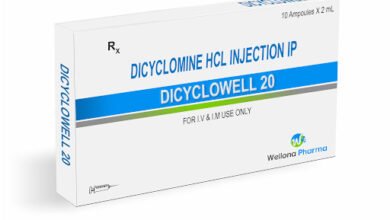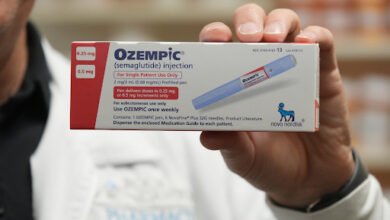What are the 3 stages of iron deficiency?

Not having enough iron is a big health problem for many people worldwide. Iron is super important because it helps carry oxygen around our bodies and keeps everything working well. When we don’t have enough iron, it can cause many health issues, and anemia is one of the big problems. Anemia is when our bodies don’t have enough special oxygen cells.
Iron deficiency happens in three stages, like steps in a journey. How much iron we have in our bodies and how much we lose can make this journey happen faster or slower. We need to understand these three stages, the signs that show we don’t have enough iron, how doctors figure it out, and why it’s so important to know about it. This way, we can do things to help and make sure our bodies stay healthy.
How Much Iron Does The Body Usually Have?
According to NIH, our bodies have about 2 grams of red blood cells (RBCs), which is like having 2000 mL of them. Iron-containing proteins, like myoglobin, cytochromes, and catalase, add up to about 500 mg. The iron in our blood is attached to something called transferrin, which is like its storage form and can range from 3 to 7 mg.
We also have storage iron, like saving iron for later, in a form called ferritin or hemosiderin. Men have around 0.8 to 1 gram of this, and women have about 0.4 to 0.5 grams. Most of this stored iron is in certain body parts like the liver, spleen, and bone marrow.
When our bodies don’t have enough iron, it goes through different stages. At first, we use up some of our iron stores, but it doesn’t cause anemia. Then, we reach a stage where the iron is mainly in a form that can be easily used. If we keep losing iron without getting enough, it can lead to anemia when we don’t have enough red blood cells.
Stages of Iron Deficiency
Here’s a Step by step guide of the stages of iron deficiency
Stage 1: Progressive iron depletion
Iron stores compensate for decreasing hemoglobin without causing anemia in this initial stage. Despite using up these stores, there’s still sufficient iron present in the sea of iron pool from the daily to weekly turnover of red blood cells. Individuals in this stage face an increased risk of anemia if iron losses persist and insufficient intake; often, you may experience fatigue or reduced exercise tolerance.
Identifying Iron Deficiency
Iron is super important for our bodies because it helps with red blood cells, muscle proteins, and how our cells work. If we don’t have enough iron, it can cause a big problem called anemia. This can make us feel really tired and out of breath or even lead to problems with our hearts. So, ensuring we get enough iron is important for staying healthy!
1. Fatigue: Iron is vital for producing hemoglobin, the molecule in red blood cells and WBCs that carries oxygen. Inadequate iron leads to reduced oxygen transport, causing fatigue and constant tiredness.
2. Weakness: Similar to fatigue, weakness occurs due to a lack of oxygen reaching tissues and muscles, affecting their ability to function optimally.
3. Pale or Yellow Skin: Reduced hemoglobin levels due to iron deficiency can lead to a paler complexion. In severe cases, the skin might take on a yellowish hue, a condition known as pallor or jaundice.
Also Read: How to Increase Hemoglobin level quickly?
4. Shortness of Breath: With insufficient iron, there’s a decreased ability of red blood cells to carry oxygen, causing the body to work harder to get the necessary oxygen, resulting in breathlessness.
5. Dizziness, Lightheadedness, Faintness: Reduced oxygen delivery to the brain due to low hemoglobin can result in feelings of dizziness, lightheadedness, and sometimes fainting.
6. Swollen, Sore Tongue: Iron deficiency can lead to glossitis, a tongue inflammation, causing it to become swollen, sore, or even change in color.
7. Abnormal Heart Rate: Inadequate oxygenation due to low hemoglobin levels can cause the heart to work harder, potentially resulting in irregular heartbeats or an increased heart rate.
8. Headache: Insufficient oxygen reaching the brain due to reduced hemoglobin levels can cause headaches.
9. Bone, Chest, Belly, and Joint Pain: Iron is involved in the synthesis of essential components within bones and joints. Deficiency can lead to bone and joint pain, while chest and belly pain might occur due to the strain on the heart and organs attempting to compensate for the lack of oxygen.
10. Growth Issues in Children: Iron is crucial for growth and development. Inadequate iron can impact growth, leading to developmental issues and potentially affecting a child’s overall health.
11. Cold Hands and Feet: Reduced circulation and oxygen delivery to extremities due to low hemoglobin can result in a feeling of coldness in the hands and feet.
Stage 2: Further iron loss
This stage results in anemia, characterized by low hemoglobin levels, although the red blood cells maintain a standard shape and contain a decent amount of iron. A significant percentage of menstruating women with minimal or absent iron reserves might find themselves in this stage in the United States.
Typical laboratory findings here include:
-
Low ferritin and serum iron levels.
-
Elevated transferrin.
-
Low percent saturation of transferrin.
-
Increased unsaturated iron binding capacity.
Stage 3: Anemia onset
More severe iron deficiency leads to classical anemia, with red blood cells low in iron content and smaller in size. The body tries to counteract this deficiency through compensatory changes, like increased erythropoietin production and reduced hepcidin production.
1. Complete Blood Count (CBC): This test measures various components of the blood, such as white blood cells, red blood cells, and platelets. It includes evaluating hemoglobin levels, hematocrit, and the size and number of red blood cells. Low hemoglobin and smaller red blood cells can indicate anemia and hint at its potential cause.
2. Serum Iron Test: This measures the amount of iron in the blood portion of the blood. Low levels can indicate an iron deficiency, as iron is essential for producing hemoglobin.
3. Serum Ferritin Test: Serum or ferritin is a protein that stores iron in the body. Low ferritin levels suggest depleted iron stores, even before anemia becomes apparent. This test helps identify iron deficiency in the early stages.
4. Transferrin Levels Assessment: Transferrin is a protein that transports iron throughout the body. High levels can suggest the body’s attempt to compensate for low iron by producing more transferrin to carry what little iron is available.
5. Blood Indices: These are calculations based on the CBC results that provide additional information about red blood cells’ size and hemoglobin content. Indices like MCV (mean corpuscular volume), MCH (mean corpuscular hemoglobin), and MCHC (mean corpuscular hemoglobin concentration) help characterize the type of anemia and potentially identify its cause.
6. Liver and Bone Marrow Biopsies: Although rarely used, these invasive procedures involve taking liver or bone marrow samples for further evaluation. These biopsies might be considered when other tests are inconclusive or to confirm suspected severe iron deficiency or other underlying conditions affecting blood cell production.
These tests, in combination or individually, help doctors to accurately diagnose iron deficiency or other types of anemia. The results aid in determining the appropriate course of treatment, which may include iron supplementation, dietary changes, or, in severe cases, other medical interventions tailored to the specific type and cause of anemia.
Understanding and diagnosing iron deficiency involves a multifaceted approach, considering symptoms and precise medical evaluations to ensure accurate identification and treatment.
Conclusion
When the body doesn’t have enough iron, it goes through different stages, affecting how well our blood works and how our cells function. It’s important to notice the signs, like feeling very tired or having trouble growing if you’re a kid. Doctors can figure out if there’s an iron problem by doing blood tests, which help find out what’s causing the issue, whether it’s not enough iron or something else.
Finding and fixing the problem early can help us feel better, stop other issues from happening, and ensure our bodies have the right amount of iron, keeping us healthy.
Source link
#stages #iron #deficiency



